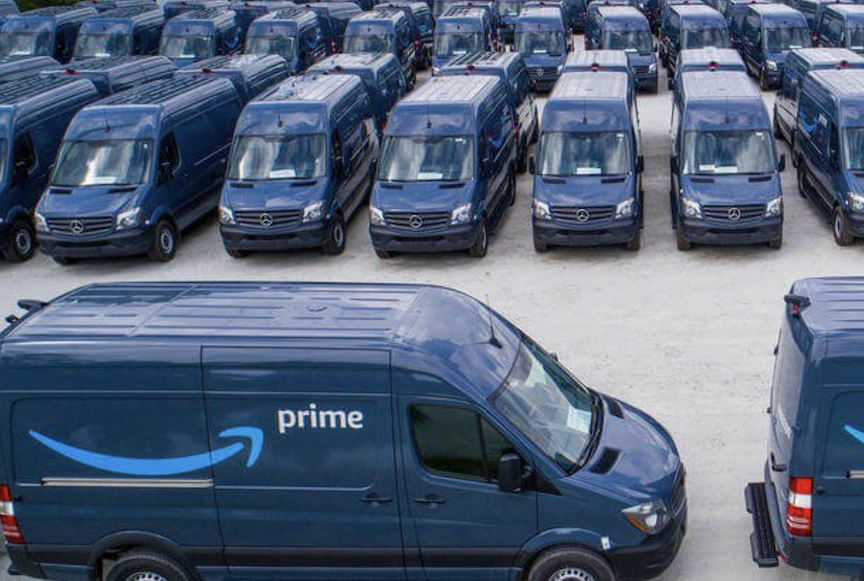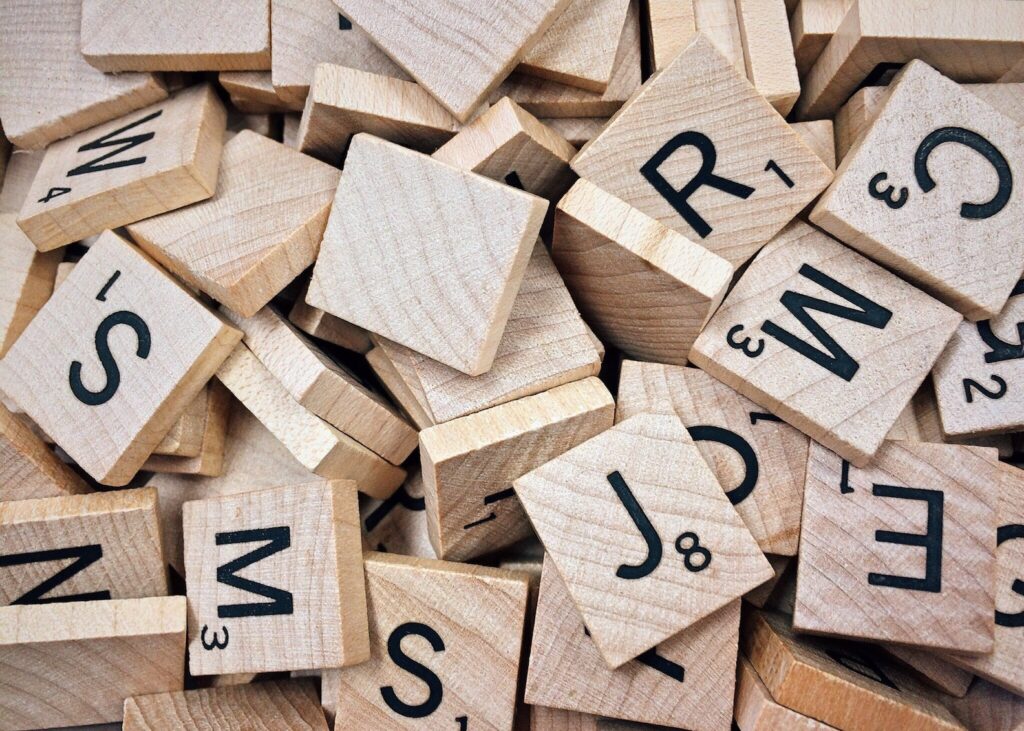Amazon vs. Walmart: Key Advertising Differences All Sellers Should Know
Amazon agency insights: With $1 trillion in net sales between major platforms, learn how top brands navigate the pros and cons of each marketplace!

E-Commerce has become a thriving, hyper-competitive industry, with many exciting twists and turns. Still, at the end of the day, it’s also a big community. To experience this fact, all you need to do is attend an Amazon meetup or conference.
Sure, the occasional open bar helps, but at these events you’ll find notoriously closed-mouth eCommerce sellers full-on swapping product launch, PPC, and last-mile logistics strategies with the competition.
That’s why it’s interesting to take a closer look at some of the similarities – and differences – between the Walmart and Amazon marketplaces. They both have attained a level of financial success that’s remarkably similar, but have achieved it in very different fashions.
The financial trajectories of Amazon and Walmart tell fascinating stories of different paths to marketplace dominance. While both companies have achieved remarkable success, their 2025 performance metrics reveal evolving competitive dynamics that directly impact seller opportunities.
But first, how exactly did these two companies end up on top of this financial mountain of cash?

How Did the Two Marketplaces Make All Those Billions?
This might be where the two companies differ the most. While their overall net sales are remarkably similar – with Walmart at $605.88 billion and Amazon at $513.98 billion – the way the two eCommerce competitors got to where they are now couldn’t be more different.
To begin with, look at their respective rates of growth. Even though they both ended up in the same place – after all, what’s a few billions between friends – the velocity with which they’ve reached those impressive numbers are very different. It feels as if Walmart has always been around. In 2007 they had already reached $345 billion dollars in net sales. Their growth since that point has been correspondingly slow and steady.
Amazon exploded onto the scene and their sales trajectory shows it. For example, back in 2007, Amazon’s net sales were less than $15 billion dollars. That’s 4.3 percent of Walmart’s sales in the same year.
Ready to Start Growing Your Amazon Brand?
Canopy’s Partners Achieve an Average 84% Profit Increase!
Find out moreWalmart reached their impressive $606 billion number through the strength of their 3335 physical locations. Even though their year-over-year eCommerce growth was 11.98% compared to Amazon’s 4.61% year-over-year eCommerce decline, brick and mortar is Walmart’s bread and butter.
It’s pretty clear that Amazon needs to keep their eyes on the rear-view mirror.
What is significant is that both companies are competing for more commercial bandwidth on each other’s traditional selling stronghold. Amazon is trying to gain a foothold in the retail market, while over the last 12 months, Walmart has exploded onto the eCommerce stage.

Walmart’s E-Commerce Sales are Trending UPWARDS
According to forecasts, Walmart’s E-Commerce sales are rapidly trending upwards. In 2022, Walmart’s online sales were estimated at 38.7 billion U.S. dollars. By 2023, it’s anticipated that their eCommerce sales will reach a value of nearly $45 billion, with $54.26 forecasted for 2024.
That’s a healthy increase from the 27.1 billion U.S. dollars recorded in 2020.
Historically, Walmart has been linked to shoppers with lower incomes. However, it has been making significant progress in attracting higher-income consumers. During a Q4 earnings call, Walmart CEO Doug McMillon stated, “We’re gaining share across income cohorts, including at the higher end which made up nearly half of the gains we saw in the U.S. again this quarter.”
Data supports this trend as well. Based on Prosper Insights & Analytics‘ monthly consumer survey, the proportion of high-income households ($150k+) enrolled in Walmart+ has consistently risen, from 12.7% in February 2022 to 28% in February 2023.
Sure, Walmart was a little late to the eCommerce party but they’ve been quickly making up ground on Amazon.

Amazon’s Sales Growth Has Been Impressive
Amazon’s growth since 2004 isn’t really a surprise to anyone with an internet connection. In the last year, Amazon’s net revenue was nearly $514 billion, up from $470 billion in 2021. When you subtract out AWS cloud revenue, third-party seller services, subscription sales, and revenue from their physical stores, Amazon’s online sales number is right at $220 billion.
The sheer magnitude of Amazon’s marketplace is undeniable. In Q4 alone, Amazon’s ecommerce sales outpaced Walmart’s annual ecommerce sales ($64.53B vs. $49.56B).
Prosper Insights & Analytics revealed that 61.8% of Americans identify Amazon as their most frequently used site for purchasing products, in contrast to just 8.6% for Walmart. However, it’s worth noting that Amazon’s figures have declined since 2022 when they were above 66%. Concurrently, Walmart’s market share has experienced growth.
Ready to Start Selling on Walmart?
Canopy’s Partners Achieve an Average 84% Profit Increase!
The Two Marketplace Giants Reached New Heights in 2025
The ecommerce landscape has transformed dramatically in 2025, with both Amazon and Walmart achieving remarkable milestones that fundamentally change how sellers should approach these platforms. While the collaborative spirit of the ecommerce community remains strong – you’ll still find sellers sharing strategies at conferences and meetups – the strategic differences between these marketplaces have become more pronounced than ever.
Most significantly, Walmart achieved its first-ever profitable ecommerce quarter in Q1 2025, with 21% year-over-year growth in online sales. This represents a seismic shift from viewing Walmart as an infrastructure investment to recognizing it as a genuine profit-generating engine for sellers.
Walmart’s Breakthrough Year:
- Annual revenue: $605.88 billion with first profitable ecommerce quarter
- E-Commerce growth: 21% year-over-year in Q1 2025
- Seller base: 200,000+ active sellers (significant growth from 150,000)
- Delivery capabilities: 75% of U.S. population covered within three hours
- Store fulfillment advantage: 7,000+ locations serving as fulfillment centers
Amazon’s Continued Dominance:
- Annual revenue: $638.0 billion (up from $513.98 billion)
- Active seller base: 2.4 million sellers globally
- Market share: Maintaining leadership despite increased competition
- AWS revenue: $117 billion annualized run rate supporting overall profitability
- Prime membership: Driving customer loyalty and repeat purchases
The velocity of growth tells the real story. Walmart’s steady, infrastructure-driven approach has reached a tipping point where their physical store network creates unmatched last-mile delivery advantages. Meanwhile, Amazon’s explosive digital-first growth now faces the challenge of maintaining momentum in a maturing market.
Walmart’s E-Commerce Profitability Revolution
Walmart’s transformation in 2025 represents one of the most significant shifts in modern retail. Their achievement of ecommerce profitability, coupled with 91% year-over-year growth in sub-three-hour deliveries, positions them as a formidable competitor to Amazon’s marketplace dominance.
Key Profitability Drivers:
- Store-as-Fulfillment Strategy: Leveraging physical locations for rapid local delivery
- Higher-Income Customer Acquisition: Nearly half of customer gains coming from higher-income demographics
- Walmart+ Growth: Premium membership driving customer loyalty and repeat purchases
- Walmart Connect Advertising: 31% revenue growth demonstrating platform maturation
This profitability breakthrough means Walmart can now invest more aggressively in seller tools, advertising platforms, and competitive fee structures that directly benefit marketplace participants.
Amazon’s Market Leadership Under Pressure
While Amazon maintains its marketplace leadership, 2025 has brought new challenges that create opportunities for strategic sellers. Increasing storage fees, inventory limits, and more stringent performance requirements have created seller frustration, while Walmart’s improved competitiveness offers viable alternatives.
Amazon’s 2025 Challenges:
- Increased Storage Costs: New low-inventory fees and higher long-term storage penalties
- Seller Competition: 2.4 million active sellers creating intense competition
- Fulfillment Pressures: “Buy with Prime” expansion requiring external inventory management
- Fee Structure Evolution: $39.99 monthly Professional plan vs. Walmart’s $0 subscription fee
Despite these challenges, Amazon’s sophisticated AI-powered advertising platform and massive customer base continue to offer unparalleled reach for sellers who can navigate the competitive landscape effectively.
5 Significant Advertising Differences to Consider
Not very long ago, pay-per-click advertising was just one of the many ways to launch an eCommerce product, now PPC might feel to a lot of sellers like a cover charge to get into an exclusive party.
While the rise of inflation over the last several months has weakened consumer demand affecting both Amazon and Walmart, their respective advertising business platforms have exploded.
Knowing that advertising is a lever that both Amazon and Walmart have been leaning on heavily as they shore up their bottom lines, it’s probably a good idea to take a closer look at how the two ad platforms differ.

1. Amazon’s Hard-to-Ignore Visibility
It’s probably a good idea to stop and think about the vast difference in traffic between Amazon and Walmart. Amazon receives more than five times the number of visitors as Walmart, which means there may be more bidding competition for sellers. However, the increase in traffic also presents an opportunity for increased brand visibility on Amazon.
Amazon offers more ad placements than Walmart, including sponsored products in search results and banners at the top of the page. This improves the impressions of your ads on Amazon and increases your visibility.
As an ecommerce-only enterprise, Amazon offers three different ad types that can be used to create more nuanced ad strategies, ultimately raising your ad’s click-through rate (CTR) by generating more visibility.
It’s important to consider both the benefits and potential challenges of advertising on Amazon, given its significant traffic advantage over other platforms. By leveraging Amazon’s multiple ad types and placements, you can create a comprehensive advertising strategy that maximizes your visibility and ultimately drives more sales.
2. Not Having to Compete Against Walmart’s “House” Brand
It’s essential to understand the differing dynamics of Amazon and Walmart. While Amazon does provide a platform for third-party sellers, they also compete directly with these sellers through their own product offerings, sometimes rebranding generic items for in-house sales. This can make it challenging to thrive in the highly competitive Amazon marketplace.
On the other hand, Walmart is known for attracting consumers seeking well-known brands, providing a unique opportunity for marketers to leverage this preference. By choosing to sell on Walmart, experienced sellers can potentially sidestep the fierce competition present in Amazon’s product categories and capitalize on the demand for established brands.

3. Walmart’s Keyword Targeting Limitations
There are big differences between Amazon and Walmart when it comes to keyword targeting and ad spending strategies. While Amazon allows sellers to use auto targeted keywords and target product categories for increased bidding options, Walmart only offers keyword targeting. These differences can impact the success of different types of sellers on each market.
On Amazon, success relies on maintaining a presence in an attributes-driven market where shoppers search for specific types of products, regardless of the brand. In fact, studies show that 78% of Amazon searches are unbranded.
This means that optimizing your ad spending strategy with relevant keywords can be crucial to achieving success on Amazon.
By contrast, Walmart sellers may rely more on maintaining brand exclusivity to win bids for popular keyword targets. This can make it more challenging for lesser-known brands to compete on Walmart, as they may not have the same level of brand recognition as larger, more established companies.
Amazon’s Advanced Targeting:
- Auto-targeted campaigns with AI optimization
- Product category targeting for broad reach
- Audience targeting based on purchase behavior
- 78% of searches being unbranded keywords
- ASIN targeting for competitor products
Walmart’s Brand-Focused Approach:
- Keyword targeting as primary option
- Brand exclusivity advantages for established companies
- Less competition for long-tail keywords
- Higher conversion rates for branded searches
- Opportunity for newer brands to establish presence
Understanding these differences helps sellers allocate advertising budgets more effectively across platforms.
4. Amazon’s Lack of Transparency
Amazon has not exactly gained a reputation for offering intricate seller analytics, especially in the realm of customer behavior. In contrast, Walmart’s Sponsored Products already boast a wider range of metrics, enabling you to fine-tune your paid advertising strategies with greater precision.
The differences in data transparency on Amazon and Walmart are quite significant. Amazon, with its vast marketplace, tends to be more opaque in providing data to sellers.
This lack of transparency can make it challenging for you to access crucial information about your competitors and customers, ultimately impacting your ability to make informed decisions and optimize your strategies.
On the contrary, Walmart offers a more transparent approach, granting sellers better access to valuable data. Walmart’s openness enables you to better understand your target audience, market trends, and competition, allowing you to make data-driven decisions that can enhance your sales performance and overall success in the eCommerce landscape.
Amazon’s Limited Transparency:
- Basic performance metrics with limited competitor insights
- Restricted customer behavior data
- Complex attribution modeling
- Limited visibility into algorithm changes
- Emphasis on Amazon’s proprietary metrics
Walmart’s Open Analytics Approach:
- Comprehensive seller analytics and performance data
- Better competitor intelligence access
- Clear attribution and conversion tracking
- Transparent fee structures and cost breakdowns
- Collaborative seller support approach
5. Amazon’s AI-Powered Advertising Sophistication
Amazon’s advertising platform in 2025 incorporates advanced AI technologies that create both opportunities and complexity for sellers. The platform now processes over 15 billion data points daily, utilizing machine learning models that adapt in real-time to shifting consumer behaviors and market conditions.
2025 Amazon Advertising Features:
- Predictive Purchase Modeling: AI algorithms predict customer buying behavior with 85% accuracy, analyzing browsing patterns, seasonal trends, and life event indicators to forecast purchase timing and product preferences up to 30 days in advance.
- Dynamic Audience Segmentation: Real-time audience optimization based on behavior patterns creates micro-segments that can shift hourly, incorporating factors like emotional state indicators, device usage patterns, and contextual shopping triggers to maximize relevance.
- Video-in-Search Placements: Enhanced visual advertising within search results now includes interactive video elements, 360-degree product views, and AI-generated product demonstrations tailored to individual user preferences and learning styles.
- Voice-Optimized Advertisements: Integration with Alexa for voice-activated shopping extends beyond simple product recommendations to conversational advertising experiences that understand context, emotion, and household dynamics for personalized messaging.
- Cross-Platform Campaign Management: Unified tracking across Amazon ecosystem includes Prime Video, Kindle, Amazon Fresh, and physical retail locations, with AI automatically optimizing budget allocation based on individual customer journey patterns across all touchpoints.
- Sentiment-Driven Targeting: New AI capability analyzes customer reviews, social media mentions, and browsing behavior to identify emotional triggers and purchase motivations, enabling campaigns that respond to customer sentiment in real-time.
- Competitive Intelligence Automation: AI monitors competitor pricing, inventory levels, and advertising strategies to automatically adjust campaign parameters, ensuring optimal market positioning without manual intervention.
Ready to Start Growing Your Amazon Brand?
Canopy’s Partners Achieve an Average 84% Profit Increase!
Find out moreCost Structure Comparison for 2025
Understanding the complete cost structure helps sellers make informed decisions about platform allocation and profitability expectations.
Fee Structure Analysis
Amazon’s 2025 Fee Structure:
- Professional plan: $39.99/month
- Referral fees: 8-15% depending on category
- FBA fees: Increasing storage costs and new low-inventory penalties
- Advertising: Higher competition driving up cost-per-click
- Long-term storage: Significantly increased fees for slow-moving inventory
Walmart’s Competitive Advantage:
- No monthly subscription fees
- Referral fees: Generally lower than Amazon
- WFS (Walmart Fulfillment Services): Lower storage and fulfillment costs
- Advertising: Lower competition creating better ROI opportunities
- Transparent pricing: No hidden fees or surprise charges
For new sellers, Walmart’s $0 monthly fee creates immediate cost advantages that can significantly impact profitability during the crucial early growth phase.
Total Cost of Ownership Calculator
Break-Even Analysis Framework:
- Calculate all platform fees including advertising
- Factor in fulfillment costs and storage fees
- Include opportunity costs of inventory allocation
- Consider customer acquisition costs and lifetime value
- Analyze cross-platform cannibalization effects
Many sellers find that a diversified approach across both platforms optimizes total profitability while reducing platform dependency risks.
Multi-Platform Strategy for 2025 Success
The most successful sellers in 2025 leverage both platforms strategically rather than choosing one exclusively.
Product Category Optimization
Amazon-Optimized Categories:
- Electronics and tech accessories
- Books and media
- High-competition consumer goods
- Products benefiting from Prime membership
- Items requiring sophisticated advertising campaigns
Walmart-Optimized Categories:
- Home and garden products
- Grocery and consumables
- Family and children’s products
- Automotive accessories
- Products targeting price-conscious consumers
Implementation Framework
Month 1: Platform Assessment
- Analyze current performance metrics on existing platforms
- Calculate total cost of ownership for each marketplace
- Identify product categories with highest profit potential
- Establish baseline performance measurements
Month 2: Diversification Strategy
- Launch test products on secondary platform
- Implement cross-platform inventory management
- Set up advertising campaigns with platform-specific strategies
- Begin collecting performance data for optimization
Month 3+: Optimization and Scaling
- Analyze comparative performance across platforms
- Optimize advertising spend allocation based on ROI
- Scale successful products and strategies
- Develop platform-specific customer acquisition strategies
Frequently Asked Questions
Q: Should I sell on both Amazon and Walmart in 2025? A: Most successful sellers benefit from a diversified approach. Walmart’s profitability breakthrough and lower fees create opportunities, while Amazon’s reach remains unmatched. The key is strategic product allocation based on category performance.
Q: How do advertising costs compare between the platforms? A: Walmart generally offers lower cost-per-click due to less competition, while Amazon provides more sophisticated targeting options. Many sellers achieve better ROI on Walmart while using Amazon for maximum reach.
Q: What’s the biggest advantage of Walmart’s fulfillment network? A: Walmart’s 7,000+ store locations enable sub-three-hour delivery to 75% of the U.S. population, creating fulfillment speed advantages that Amazon struggles to match in many markets.
Q: How important is AI integration for marketplace success? A: Essential. Sellers using AI tools for inventory management, advertising optimization, and listing enhancement consistently outperform those relying on manual processes by 20-30%.
Q: Which platform is better for new sellers? A: Walmart offers advantages for new sellers including no monthly fees, lower competition, and more transparent analytics. However, Amazon’s massive customer base provides unmatched growth potential for those who can navigate the complexity.
Partner with Canopy Management for Multi-Platform Excellence
Successfully navigating both Amazon and Walmart marketplaces in 2025 requires sophisticated understanding of each platform’s unique algorithms, advertising systems, and optimization strategies. The complexity of managing AI-powered campaigns, cross-platform inventory, and platform-specific customer behavior demands specialized expertise.
That’s why successful brands partner with Canopy Management. Our team of former Amazonians, multi-million dollar sellers, and award-winning experts understand the nuances of both platforms and how to leverage their unique strengths for maximum profitability.
When you work with Canopy Management, you gain access to:
- Multi-Platform Strategy Development: Optimized product allocation across Amazon and Walmart
- AI-Powered Advertising Management: Sophisticated campaign optimization on both platforms
- Cross-Platform Inventory Synchronization: Efficient management across multiple marketplaces
- Platform-Specific Optimization: Tailored strategies for each marketplace’s unique requirements
- Performance Analytics: Comprehensive tracking and optimization across all channels
- Diversification Risk Management: Reducing platform dependency while maximizing growth
Our partners achieve an average 84% profit increase by strategically leveraging both platforms’ strengths while avoiding their respective challenges.
Ready to maximize your success across both Amazon and Walmart marketplaces?
Contact our experts today to discuss your multi-platform growth strategy.
Canopy Management is a full-service marketing agency for Amazon, Walmart, and TikTok sellers. Our team consists of multi-million dollar, omni-channel entrepreneurs, industry leaders, and award-winning experts. When you consider the many ways that Canopy Management can help you grow your business, you’ll see why selling on Amazon is much easier “under the Canopy.”
Ready to Start Growing Your Amazon Brand?
Canopy’s Partners Achieve an Average 84% Profit Increase!
Find out more


